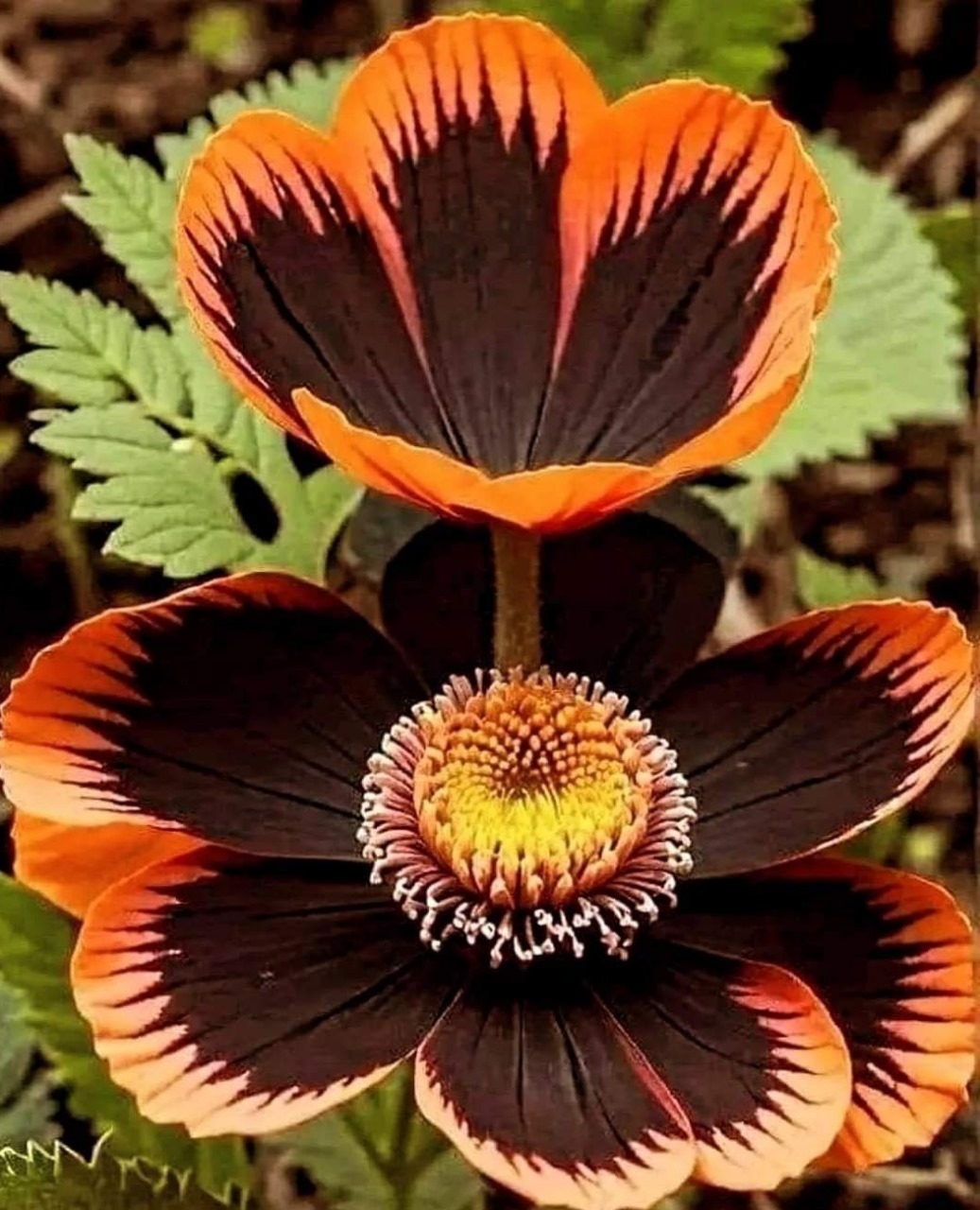This striking black and orange flower, with its fiery petal edges and dramatic contrast, is a true showstopper. The deep, dark center gradually transitions to a vibrant orange at the edges, creating a flame-like effect. This flower is perfect for adding a bold, almost surreal touch to any garden or floral arrangement, catching the eye of anyone who sees it. Its unique color combination, resembling the energy of fire, makes it a standout among other garden plants.
Growing Conditions for the Black and Orange Flower
- Temperature: This flower thrives in moderate temperatures ranging between 15-25°C (59-77°F). It is well-suited to temperate climates and can grow in both spring and summer when temperatures are mild and consistent. Be sure to protect the plant from frost, as extreme cold temperatures can damage its delicate petals.
- Light: The black and orange flower enjoys full sunlight. A sunny spot in the garden will encourage vibrant blooms and healthy growth. However, it can tolerate some light shade, especially in hotter climates where direct afternoon sun may cause the petals to scorch.
- Soil: Like many garden flowers, the black and orange flower prefers well-drained soil. It’s important to ensure that the soil does not retain too much moisture, as this could lead to root rot. A loamy or sandy soil mix with good drainage works best. If your soil tends to retain too much moisture, consider adding organic matter like compost to improve its structure.
Caring for the Black and Orange Flower
- Watering: While this flower prefers moderate moisture, it’s important not to overwater. Water the plant deeply, but allow the soil to dry slightly between waterings. The goal is to keep the soil moist but not soggy. Water early in the morning or late in the afternoon to prevent moisture on the foliage during the hottest parts of the day, which could promote fungal diseases.
- Fertilization: Feed your black and orange flower with a balanced, all-purpose fertilizer during the growing season to promote robust growth and abundant blooms. Fertilize every 4-6 weeks, but avoid over-fertilizing, as this can lead to excessive foliage growth at the expense of flowers. During the dormant season, reduce feeding or stop entirely.
- Pruning: Pruning is essential for maintaining the plant’s health and shape. After flowering, remove dead or spent blooms to encourage new growth and prevent the plant from diverting energy into seed production. Cut back any damaged or overgrown stems to keep the plant compact and bushy.
Common Problems and Solutions
- Pests: Although relatively pest-resistant, this flower can sometimes attract aphids or other common garden pests. To manage pests, regularly inspect the plant and use insecticidal soap or neem oil if necessary.
- Diseases: The black and orange flower can sometimes be prone to fungal diseases if the leaves stay too moist. Ensure proper air circulation around the plant and avoid overhead watering. If fungal infections occur, remove affected leaves and treat with an appropriate fungicide.
Conclusion
With its bold black and orange petals and unique flame-like appearance, this flower is an excellent choice for gardeners looking to add dramatic flair to their landscapes. Whether used as a focal point in the garden or a striking addition to floral arrangements, its vibrant colors are sure to turn heads. By providing the right growing conditions, including moderate temperatures, sunlight, and well-drained soil, you can enjoy this captivating bloom season after season.
This flower thrives in temperate climates and makes a great choice for anyone looking to grow something a bit different in their garden. 🌸🔥
